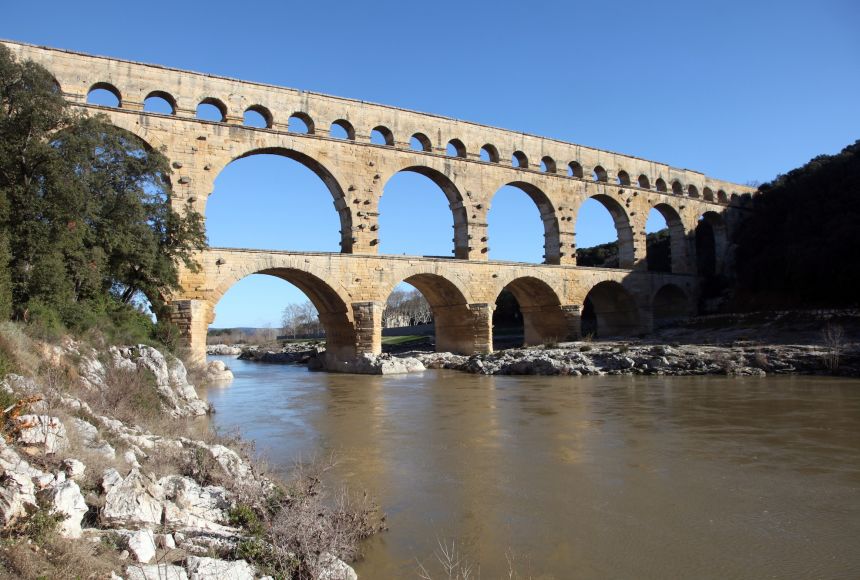The ancient Roman Empire left a huge mark on our world. We can still see its effects today, from bridges and stadiums to books and the words we hear every day.
Art and Architecture
The ancient Greeks greatly influenced the Romans. However, the Romans were able to improve certain Greek designs and inventions.
Ancient Romans created curved roofs and large arches. These were able to support more weight than Greek buildings, which used posts and beams. Arches served as the foundation for huge bridges that the Romans created.
The Colosseum is a large stadium in Rome. It showed how much the Romans loved games. The sports stadiums we see today have oval shapes and separate levels of seating. Both were Roman ideas.
The arches of the Colosseum are made out of cement, a remarkably strong building material. The Romans made it with what they could easily find: ash and rock from nearby volcanoes. Modern scientists believe that the use of this ash is the reason that structures like the Colosseum still stand today.
Roman underwater structures proved to be even sturdier. Seawater reacting with the volcanic ash created crystals. These crystals filled the cracks in the concrete. Today, to make a concrete this strong, builders must strengthen it with steel. Scientists study Roman concrete, hoping to match the success of the ancient master builders.
Sculptural art of the period has proven to last long, too. Romans used marble to make monuments to great human achievements and achievers. Many such sculptures can be seen today in museums.
Technology and Science
The Romans were skilled engineers. They understood the science of how things move. They made aqueducts, a type of plumbing system that brought in water from all over. They used water for powering mines and mills. They also built an expansive road network by laying gravel and then paving the road with rock slabs. The Roman road system was so large, it was said that "all roads lead to Rome."
The Romans also developed methods for farming. They knew much about climate, soil, and other planting-related subjects. They pioneered ways to effectively plant crops and to water and drain fields.
Modern farmers still use Roman methods. One example is pruning, which is removing certain branches or leaves to make a plant grow better.
Literature and Language
Much of the literature of the world has been greatly influenced by writing of the ancient Romans. Poets such as Virgil, Horace, and Ovid produced works that have had a lasting effect.
Ovid's Metamorphoses, for example, inspired authors such as Geoffrey Chaucer, Dante, and William Shakespeare.
Ancient Romans spoke Latin, which also had a huge effect on Europe, the United States, and beyond. As the Romans took over new lands, Latin spread throughout the world. Latin became the root for a group of languages known as the "Romance languages." These include French, Spanish, Italian, Portuguese, Romanian, and Catalan.
Latin root words are also the foundation for many English words. The English alphabet is based on the Latin alphabet. "Agenda" and "bona fide" are examples of common Latin words we still use today. Much Latin is still used in the modern court system.
Law
The Roman justice system influenced how court cases happen today.
For example, they held an initial hearing, much like there is today. This is where a government official decided whether or not there was actually a true, worthy case. If there was, a notable Roman citizen would start a trial. Witnesses and evidence would be presented.
Roman laws and their court system have served as the foundation for many countries' justice systems. The United States and much of Europe are examples.
The ancient Romans helped lay the groundwork for many aspects of the modern world. It is no surprise that a once-booming empire was able to change the world in so many ways.

